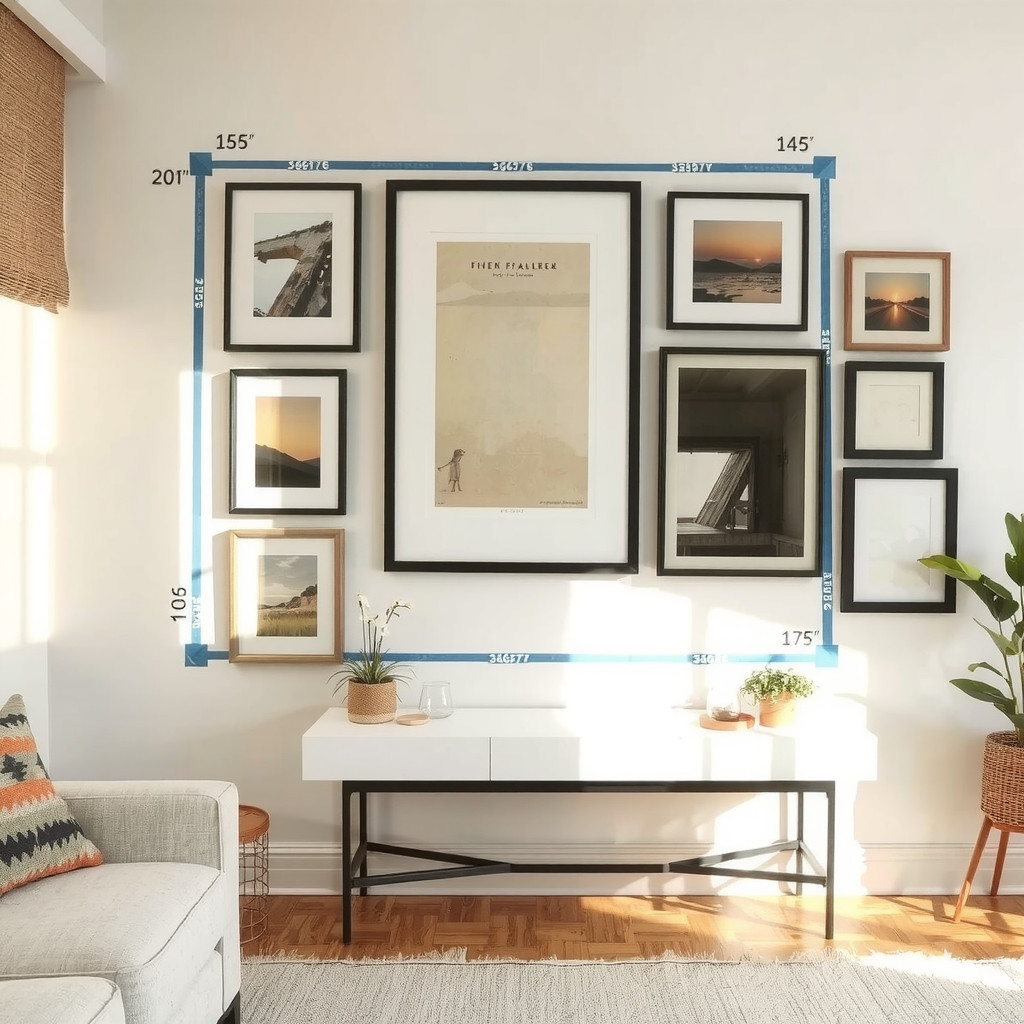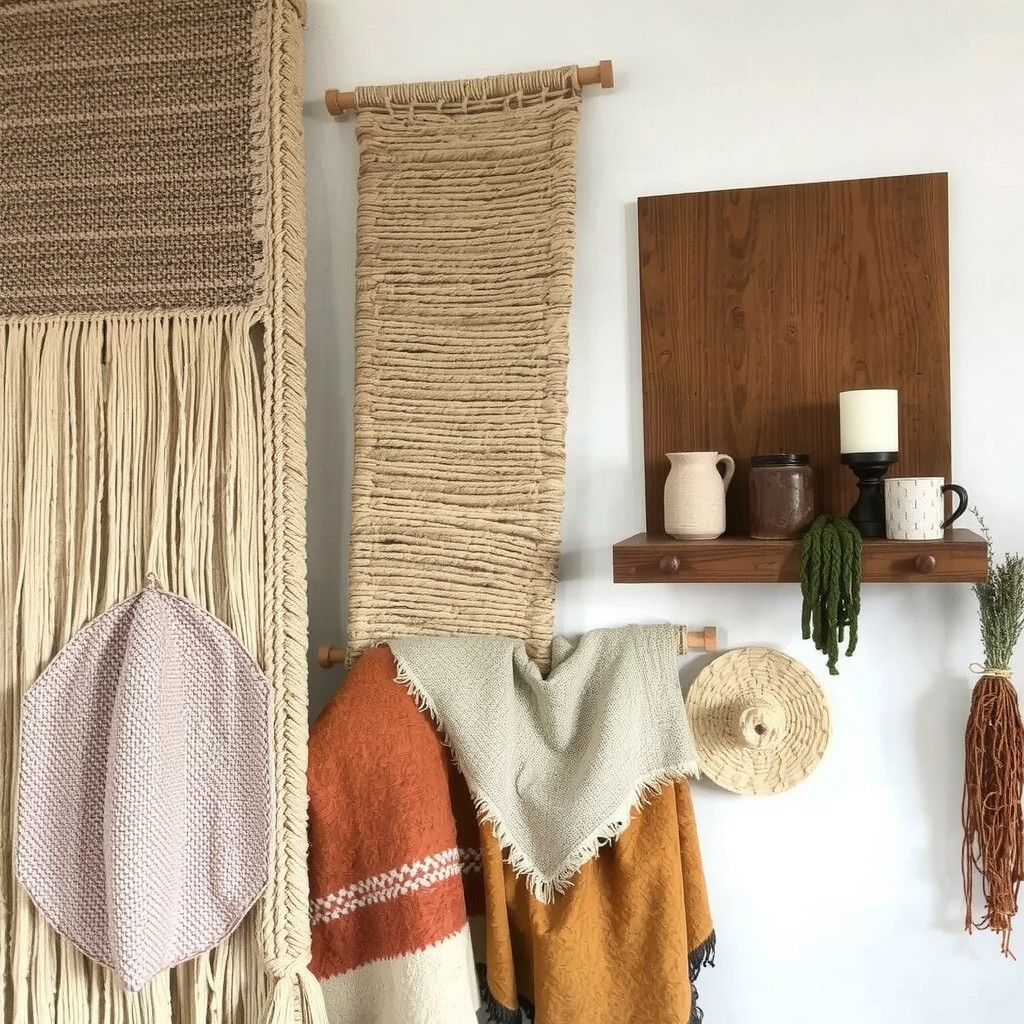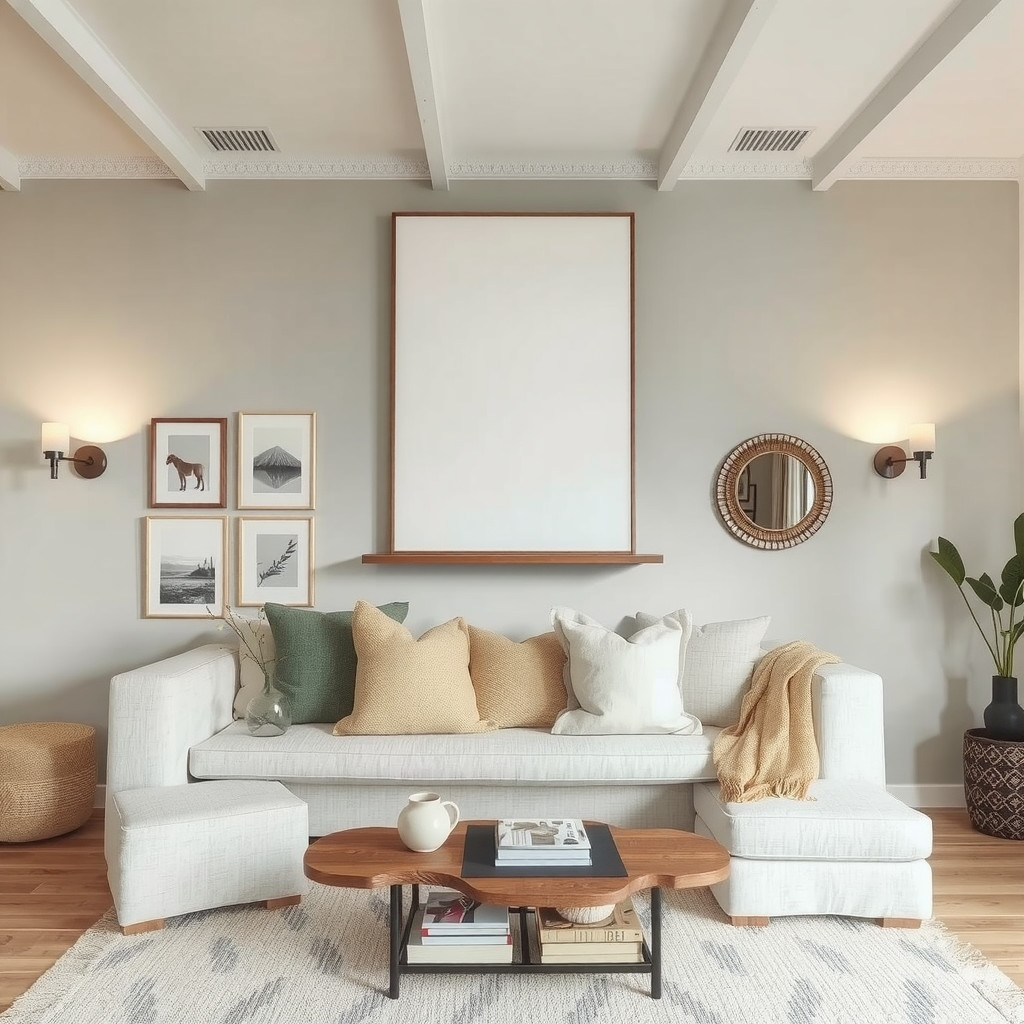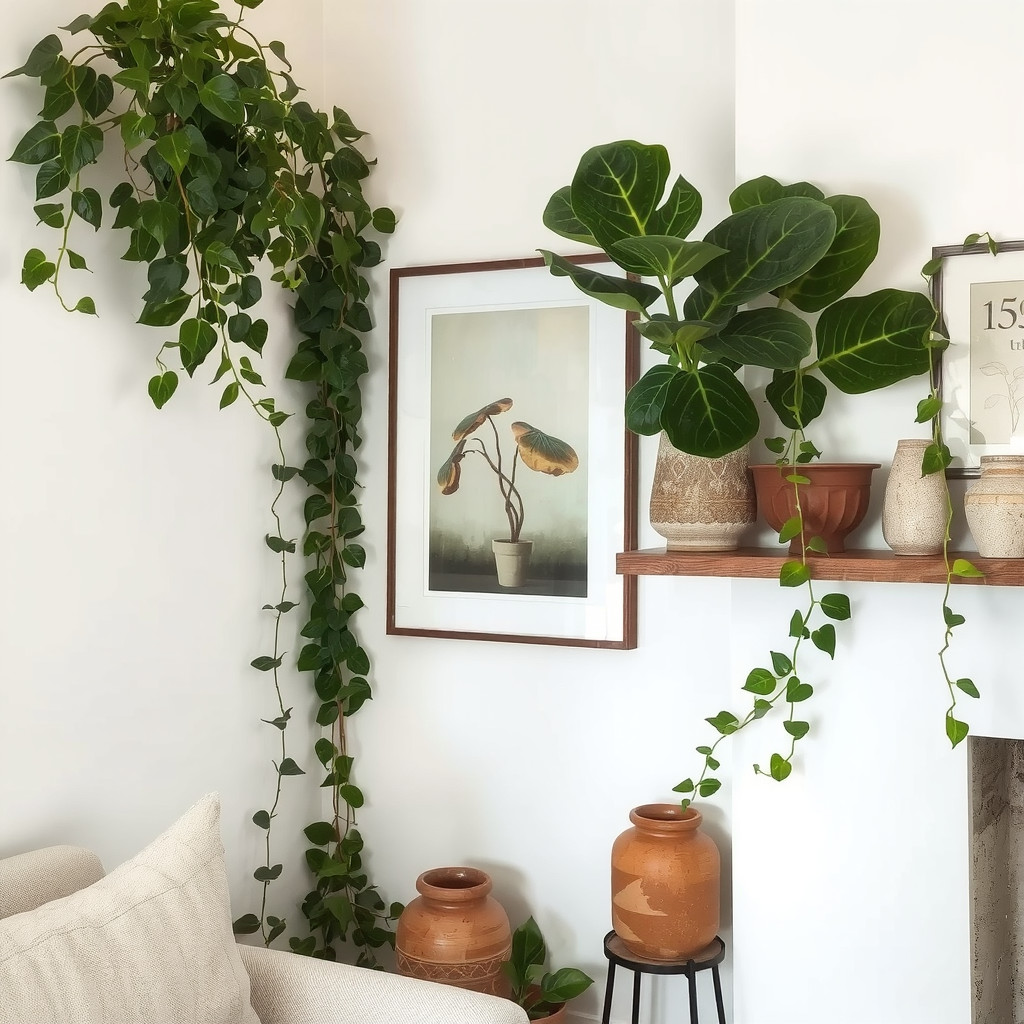ADVERTISEMENT
Introduction
You can transform blank walls into layered compositions that feel collected and intentional. Start by thinking in planes—artworks, shelves, and textiles that speak to a unified palette. This guide helps you balance scale, texture, and rhythm so your living room feels calm. Focus on textures and rhythm more than matching every single frame or object precisely.

Layout and Positioning
Measure the wall first and mark the main sightlines before hanging anything heavy. Anchor larger pieces at eye level and stagger smaller items to create comfortable movement. Leave breathing room around clusters so the composition reads easily from multiple seating angles. Groupings work best when you vary vertical and horizontal pieces to maintain dynamic balance.

Materials and Textiles
Introduce tactile layers like woven tapestries, framed textiles, or a mounted rattan panel for warmth. Combine matte frames and glossy ceramics to catch and soften light across the wall surface. Limit the palette to three tonal families so texture remains the star without visual chaos. Natural materials mellow with age and add a lived-in elegance to your wall ensemble.

Focal Points
Select one commanding piece, such as a large canvas or sculptural shelf, to center attention. Balance its weight with smaller groupings that echo color or form to create visual dialogue. Consider asymmetry for livelier arrangements, offsetting a strong focal anchor with lighter elements nearby. A mirror can also act as a focal element, reflecting light and expanding the space.

Lighting
Layer ambient, task, and accent lighting to give your wall depth during evening hours. Picture a slim wall sconce warming a textured print, while track lighting washes a gallery. Use dimmers and directional fixtures to tune contrast without creating harsh hotspots or glare. Warm bulbs and shaded fixtures help prevent color distortion on artworks and textiles.

Greenery
Bring in vertical plants to soften hard edges and introduce organic height to walls. Try trailing vines on a high shelf, or a slim fiddle leaf near a framed piece. Select pots in neutral textures so greenery enhances the wall without becoming visually loud. Rotate plants periodically to encourage even growth and keep the display looking intentional.

Tips
- Start with a single mood board to guide color choices and material selections across the wall.
- Test layouts on the floor and photograph arrangements to check scale from seating positions.
- Secure heavy pieces with anchors rated for your wall type to ensure long-term safety.
- Repeat shapes or hues three times to build rhythm and cohesive visual flow around the room.
- Allow one wall to evolve seasonally, swapping textiles and small objects for subtle updates.
- Keep circulation clear near seating so guests can enjoy the wall without feeling crowded.
- Frame small prints in a consistent mat size to unify eclectic artwork into a cohesive series.
- Consider a slim floating shelf to rotate seasonal objects while maintaining wall continuity and ease.
ADVERTISEMENT